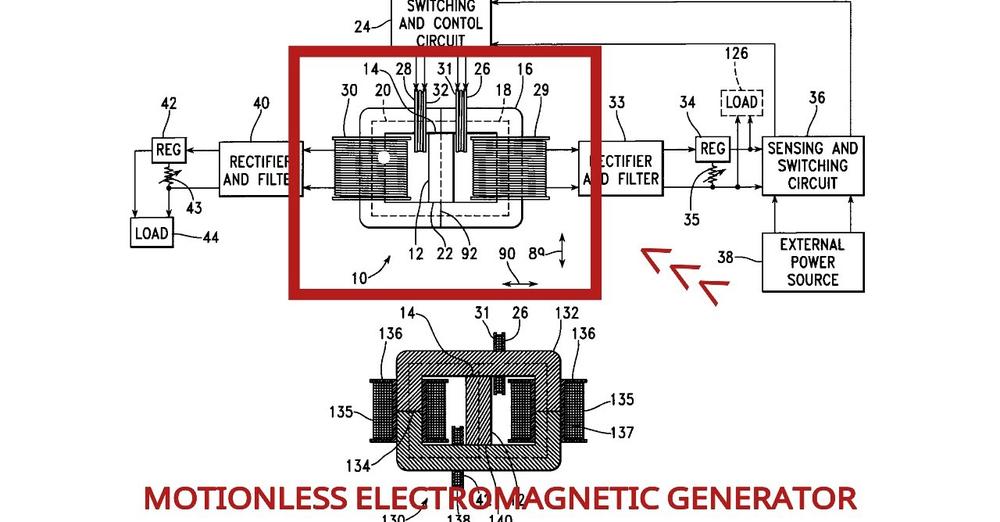
MEG for short. An electromagnetic generator without moving parts includes a permanent magnet and a magnetic core including first and second magnetic paths. A first input coil and a first output coil extend around portions of the first magnetic path, while a second input coil and a second output coil extend around portions of the second magnetic path. The input coils are alternatively pulsed to provide induced current pulses in the output coils. Driving electrical current through each of the input coils reduces a level of flux from the permanent magnet within the magnet path around which the input coil extends. In an alternative embodiment of an electromagnetic generator, the magnetic core includes annular spaced-apart plates, with posts and permanent magnets extending in an alternating fashion between the plates. An output coil extends around each of these posts. Input coils extending around portions of the plates are pulsed to cause the induction of current within the output coils.
Inventors: Patrick Stephen L; Bearden Thomas E.; Hayes James C.; Moore Kenneth D.; Kenny James L.
This device was patented on March 26, 2002, US Patent 6,362,718
The Motionless Electromagnetic Generator (MEG) is a static device designed to achieve high-efficiency energy transfer, purportedly exceeding conventional limits through vacuum energy extraction, comprising a nanocrystalline core such as a Metglas alloy with primary and secondary coils wound around a permanent magnet, operating without any moving parts. A brief DC pulse applied to the primary coil induces rapid flux switching in the core's B-H hysteresis loop, shifting it to high permeability and generating a steep flux change that in turn induces high-voltage output in the secondary coils, where the terminals act as receivers for magnetic energy derived from vacuum fluctuations. Theoretically grounded in O(3) electrodynamics—a non-Abelian extension of standard U(1) Maxwell-Heaviside theory using Yang-Mills gauge fields and fiber bundle geometry—the MEG leverages longitudinal B
Congressman Thomas Massie
Much love to Lt. Col. Thomas E. Bearden, Ph.D., M.S. (Nuclear Engineering), B.S. (Mathematics), U.S. Army (Retired), President/CEO of CTEC, Inc., Fellow Emeritus of the Alpha Foundation's Institute for Advanced Study (AIAS), Director of the Association of Distinguished American Scientists (ADAS), Life Member of the Alabama Academy of Science, Emeritus Member of the American Association of Physics Teachers
See Also
Bearden
Floyd Sweet
Free Energy
Scalar
Scalar electromagnetics
Scalar Potential
